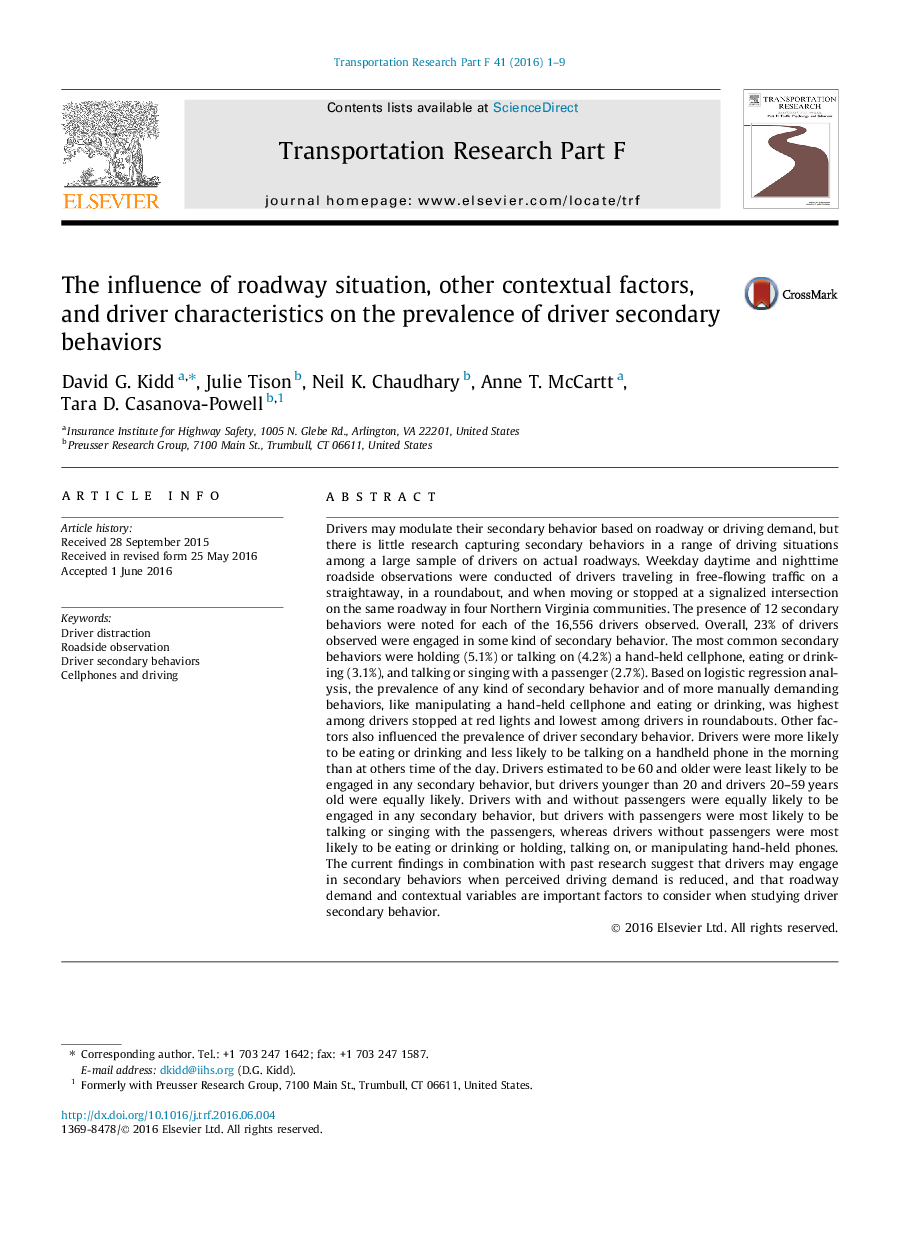| کد مقاله | کد نشریه | سال انتشار | مقاله انگلیسی | نسخه تمام متن |
|---|---|---|---|---|
| 897578 | 915173 | 2016 | 9 صفحه PDF | دانلود رایگان |
• 16,556 drivers were observed in different situations on a single roadway.
• Overall, 23% of drivers were engaged in some type of secondary behavior.
• Manually demanding behaviors were most common among drivers stopped at red lights.
• Manually demanding behaviors were least common among drivers in roundabouts.
• Secondary behavior varied by driver age, passenger presence, and time of day.
Drivers may modulate their secondary behavior based on roadway or driving demand, but there is little research capturing secondary behaviors in a range of driving situations among a large sample of drivers on actual roadways. Weekday daytime and nighttime roadside observations were conducted of drivers traveling in free-flowing traffic on a straightaway, in a roundabout, and when moving or stopped at a signalized intersection on the same roadway in four Northern Virginia communities. The presence of 12 secondary behaviors were noted for each of the 16,556 drivers observed. Overall, 23% of drivers observed were engaged in some kind of secondary behavior. The most common secondary behaviors were holding (5.1%) or talking on (4.2%) a hand-held cellphone, eating or drinking (3.1%), and talking or singing with a passenger (2.7%). Based on logistic regression analysis, the prevalence of any kind of secondary behavior and of more manually demanding behaviors, like manipulating a hand-held cellphone and eating or drinking, was highest among drivers stopped at red lights and lowest among drivers in roundabouts. Other factors also influenced the prevalence of driver secondary behavior. Drivers were more likely to be eating or drinking and less likely to be talking on a handheld phone in the morning than at others time of the day. Drivers estimated to be 60 and older were least likely to be engaged in any secondary behavior, but drivers younger than 20 and drivers 20–59 years old were equally likely. Drivers with and without passengers were equally likely to be engaged in any secondary behavior, but drivers with passengers were most likely to be talking or singing with the passengers, whereas drivers without passengers were most likely to be eating or drinking or holding, talking on, or manipulating hand-held phones. The current findings in combination with past research suggest that drivers may engage in secondary behaviors when perceived driving demand is reduced, and that roadway demand and contextual variables are important factors to consider when studying driver secondary behavior.
Journal: Transportation Research Part F: Traffic Psychology and Behaviour - Volume 41, Part A, August 2016, Pages 1–9
